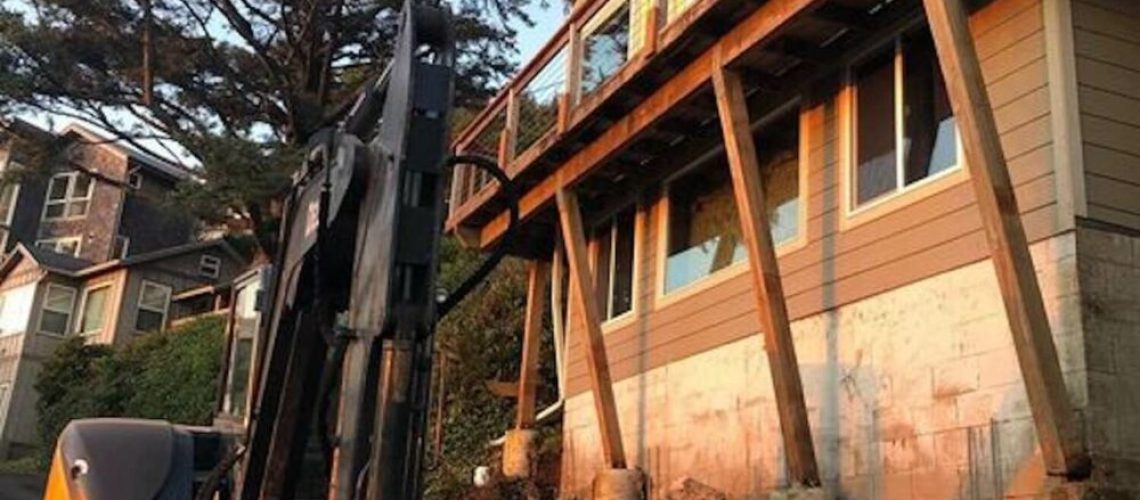A sturdy and well-maintained support system is crucial for the stability and structural integrity of any home. Support beams, often referred to as the backbone of a house, bear the weight of the structure and provide support for floors, walls, and the roof. Over time, support beams may weaken due to various factors, such as age, moisture damage, insect infestation, or poor construction. In such cases, it becomes necessary to consider support beam replacement to ensure the safety and longevity of your home. This article explores the importance of support beam replacement, signs that indicate a need for replacement, the process involved, and the benefits of investing in this crucial home improvement project.
The Importance of Support Beam Replacement
Support beams play a vital role in maintaining the structural integrity of a home. These beams distribute the weight of the structure evenly, preventing sagging floors, cracks in walls, and other structural issues. When support beams deteriorate or become compromised, they can lead to significant problems, compromising the safety of occupants and reducing the overall value of the property.
Replacing damaged posts or weakened support beams at home is essential for several reasons:
- Safety: Damaged support beams can pose a serious risk to the stability of your home. They may buckle or collapse, leading to potential injuries or even structural failure. Replacing compromised beams ensures the safety of occupants and protects against catastrophic accidents.
- Structural Integrity: Support beams provide the necessary strength and stability to maintain the integrity of a building. When beams deteriorate, it can result in sagging floors, sloping walls, and other structural deformities. Replacing damaged beams restores the structural integrity of the home and prevents further damage.
- Longevity: Investing in support beam replacement helps extend the lifespan of your home. By addressing structural issues promptly, you can prevent the spread of damage to other components of the building and ensure that your home remains solid and secure for years to come.
Signs That Indicate the Need for Support Beam Replacement
Determining whether your home requires support beam replacement can be challenging, as the signs of deterioration may not always be obvious. However, several indicators suggest a need for immediate attention. It is essential to inspect your home regularly and look out for the following signs:
- Visible Sagging: If you notice floors or ceilings that appear uneven or sagging, it may indicate a problem with the support beams. Visible dips or slopes in the flooring are warning signs that the beams may have weakened or shifted.
- Cracks in Walls or Ceilings: Cracks that appear near support beams or run vertically along walls can be a sign of structural issues. These cracks may indicate that the beams are no longer adequately supporting the weight of the structure.
- Moisture Damage: Water damage can significantly weaken support beams. Look for signs of rot, mold growth, or water stains on the beams. If moisture has compromised the integrity of the wood, replacement may be necessary.
- Insect Infestation: Certain insects, such as termites, can cause severe damage to support beams, hollowing them out and making them structurally unsound. Look for visible signs of insect infestation, including small holes, tunnels, or insect droppings near the beams.
- Age and Wear: Support beams, especially in older homes, may deteriorate over time due to wear and tear. If your home is several decades old and has never undergone support beam replacement, it is advisable to have them inspected by a professional.
If you observe any of these warning signs, it is crucial to consult a qualified contractor or structural engineer to assess the condition of your support beams and determine if replacement is necessary.
The Process of Support Beam Post Replacement
Support beam replacement involves a systematic process that ensures the safe removal of damaged beams and the installation of new, structurally sound ones. It is crucial to hire a professional contractor experienced in this type of work to ensure the job is done correctly. The general steps involved in support beam replacement include:
- Inspection and Assessment: A qualified professional will conduct a thorough inspection to assess the condition of the support beams. This evaluation will determine the extent of the damage and identify any underlying causes.
- Planning and Design: Based on the assessment, the contractor will develop a detailed plan for the support beam replacement. This plan will consider the specific requirements of your home and may involve engineering calculations to determine the appropriate beam sizes and placement.
- Temporary Support: Before removing the damaged beams, temporary supports will be installed to ensure the stability of the structure during the replacement process. These temporary supports will bear the weight of the building until the new beams are in place.
- Beam Removal: Once the temporary supports are in place, the damaged support beams will be carefully removed. This process requires expertise and precision to prevent any further damage to the structure.
- Installation of New Beams: With the old beams removed, new support beams will be installed according to the predetermined plan. The new beams may be made of wood, steel, or engineered materials, depending on the specific requirements of the structure.
- Structural Reinforcement: In some cases, additional structural reinforcement may be necessary to enhance the overall stability of the home. This may involve the installation of cross beams, brackets, or other reinforcement elements to ensure maximum strength.
- Finishing Touches: Once the new beams are in place, the temporary supports will be removed, and any necessary adjustments or finishing touches will be made to ensure the smooth functioning of the support system.
Benefits of Support Beam Replacement
Investing in home beam support replacement offers several benefits to homeowners:
- Enhanced Safety: By replacing damaged support beams, you ensure the safety of your family and minimize the risk of accidents or structural failures.
- Improved Structural Integrity: Support beam replacement restores the stability and integrity of your home, preventing further damage and preserving its value.
- Prevention of Further Damage: Addressing support beam issues promptly can prevent the spread of damage to other areas of the building, such as walls, floors, or the roof.
- Long-Term Cost Savings: While support beam replacement may involve upfront costs, it can save you money in the long run by preventing more extensive and costly repairs down the line.
- Increased Property Value: A structurally sound home with properly functioning support beams holds greater value in the real estate market.
Hiring a Professional for Support Beam Replacement
Support beam replacement is a complex and critical undertaking that requires the expertise of trained professionals. Hiring a reputable contractor experienced in structural work ensures the project is completed safely and efficiently. Here are some reasons why professional assistance is essential:
- Knowledge and Expertise: Professional contractors possess in-depth knowledge of structural systems and understand the complexities involved in support beam replacement. They can accurately assess the condition of existing beams, develop appropriate plans, and execute the project to meet building codes and standards.
- Tools and Equipment: Support beam replacement requires specialized tools and equipment for accurate measurements, beam installation, and structural reinforcement. Professional contractors have access to the necessary tools and know how to use them effectively.
- Building Code Compliance: Support beam replacement must adhere to local building codes and regulations. Professionals are well-versed in these requirements and can ensure that the project meets all necessary standards, obtaining any required permits or inspections.
- Insurance and Liability: Replacing support beams involves potential risks and liabilities. Hiring a professional contractor who carries appropriate insurance coverage protects you from any financial or legal consequences in case of accidents or property damage during the project.
- Warranty and Guarantee: Reputable contractors often provide warranties or guarantees for their workmanship. This means that if any issues arise after the support beam replacement, they will rectify them promptly at no additional cost.
When selecting a contractor, ask for references, review their portfolio, and inquire about their experience in support beam replacement. It is also advisable to obtain multiple quotes and compare them to ensure fair pricing and comprehensive services.
Conclusion
Support beam replacement is a vital home improvement project that ensures the safety, stability, and longevity of your home. By addressing damaged or weakened support beams promptly, you can prevent further structural issues and safeguard your investment. Regular inspections, awareness of warning signs, and consultation with qualified professionals are essential in identifying when support beam replacement is necessary. Remember, it is crucial to hire experienced contractors or structural engineers to ensure the process is carried out correctly and effectively. By investing in support beam replacement, you strengthen your home’s backbone and create a secure living environment for yourself and future generations.

